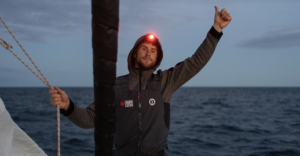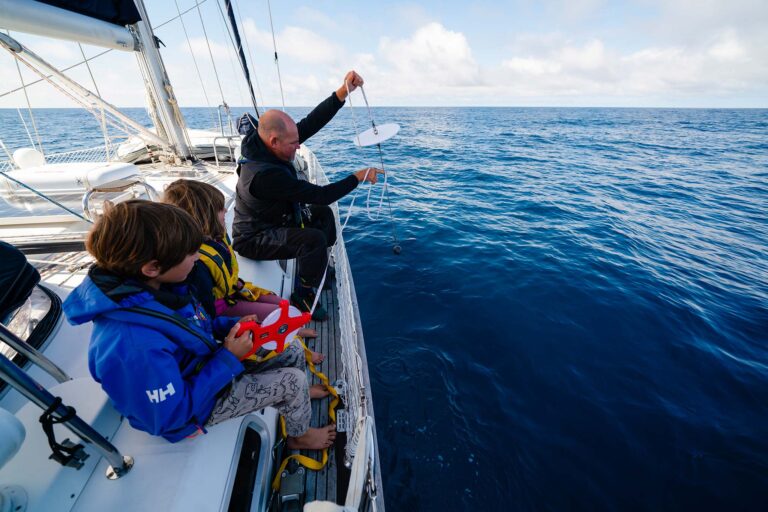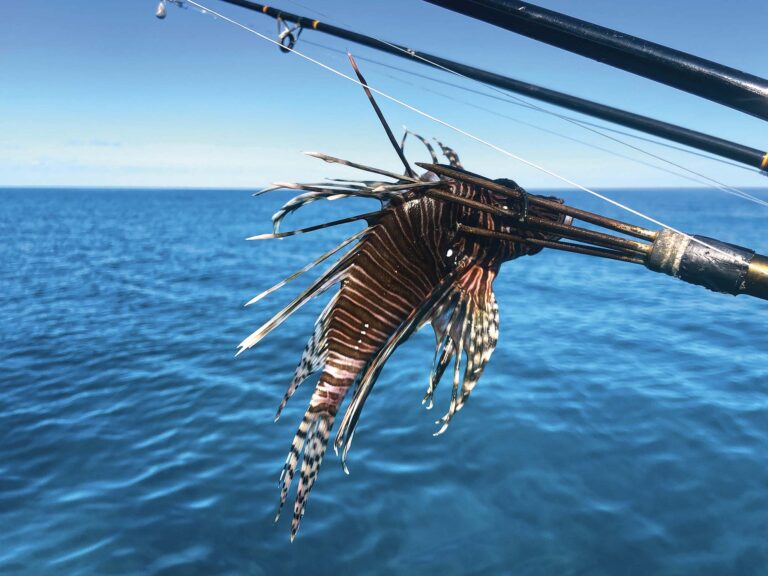
Most sailors are well attuned to keeping an eye out for cold fronts, which can bring nasty, squally weather with strong winds and large seas. But there are times when the worst weather actually comes ahead of the cold front, and that’s when a pre-frontal trough is present. Sometimes, a pre-frontal trough can precede a cold front by up to 12 hours—translating to a couple hundred miles—so it’s well worth it learning how to identify them to better prepare yourself and your boat for what’s coming.
To start understanding how to identify a pre-frontal trough, let’s look at how they differ from cold fronts.
In the days preceding a typical cold front, wind may veer gradually from east to southeast while remaining fairly constant in strength. Closer to the approaching front, winds veer more rapidly from southeast to southwest. They may strengthen (indicating the approaching cold front is strong), change little in strength (meaning a moderate front), or become lighter as they veer (the approaching cold front is weak).
As the cold front passes, you may see a brief interval of showers or squalls, followed by wind veering generally to the northwest while possibly strengthening if the post-frontal wind gradient is strong. Immediately after the cold front passes, temperatures typically drop, and the dew point (which measures moisture) also falls, usually significantly. As well, the barometric pressure will drop along the front.
When a pre-frontal trough is approaching ahead of the cold front, the weather progression is a bit different. In the days before the cold front, wind may veer gradually from east to southeast while remaining fairly constant in strength. Closer to the approaching cold front, winds veer more rapidly from southeast to south-southeast or south—significantly, not southwest—while strengthening, often considerably.
Along the pre-frontal trough itself, you’ll likely see strong squalls and convective thunderstorms, with wind typically veering from south-southeast all the way to west-southwest as the thunderstorms pass. After this bombastic weather, there’s a bit of a lull of lighter southwest-west wind that can last from a few hours up to about 12 hours between the pre-frontal trough and the actual cold front. Then the cold front passes, with wind veering northwest, immediately followed by dropping temperatures and falling dew point.
Another difference is that with a pre-frontal trough, you’ll see two drops in barometric pressure—one along the pre-frontal trough, and another along the cold front.
If you focus only on the cold front and its location and timing, you may be surprised by the much stronger conditions associated with the pre-frontal trough. The atmospheric conditions that support formation of a pre-frontal trough often cause wind in a broad area along the trough to strengthen to 30 to 40 knots or more, along with strong to severe thunderstorms sometimes in excess of 50 knots. The milder southwest-west winds between the pre-frontal trough and the cold front are often under 20 knots. The strength of the northwest wind behind the actual cold front depends on the post-frontal wind gradient, but it’s almost never as strong as conditions along the pre-frontal trough.
To help see what this looks like, let’s walk through the forecast for a strong cold front off the U.S. East Coast trailing into the Florida/Bahamas area on the night of December 10, 2023. The forecast (images 1-4 courtesy of WeatherBell, weatherbell.com) are the GFS model forecast on December 5, predicting what weather would look like the evening of December 10, nearly six days before the event. The actual event—the enhanced infrared satellite image 5—shows the event as of late December 10.

In image 1 above, the wind forecast on December 5 for the evening of December 10 shows strong mostly south wind from the area off Cape Hatteras, trailing south-southwest into the northern Bahamas. In waters off the Carolinas, the strongest wind (35-45 knots) is the south wind near the west longitude of Cape Hatteras, with lesser wind (generally under 30 knots) veering from southwest to west-northwest in areas farther west. The forecast for waters off the Carolinas does not clearly indicate the presence of a pre-frontal trough. But, the area where wind veers from south to southwest to west-west-northwest is large enough that it suggests a pre-frontal trough is possible. If there were no pre-frontal trough, the veering from south to west-northwest would be more abrupt, occurring over a smaller area.
Looking farther south, it becomes quite clear there is a pre-frontal trough: Near and south of 31N latitude (the latitude of southern Georgia), the strongest wind is along a band marking the western edge of south or south-southwest winds, followed by a zone of lighter southwest-west wind (except for a small area of stronger southwest-west wind near the Abacos due to predicted convective thunderstorms). Brisk northwest wind is behind the cold front which trails southwestward across Central Florida.
The zone of lighter southwest-west wind is quite large, possibly lasting up to 12 hours between the pre-frontal trough and the cold front.

In image 2 above, the precipitation forecast on December 5 for the evening of December 10 shows precipitation along the pre-frontal trough, with the heaviest precipitation off Hatteras and near and just north of the northern Abacos. There is also a band of lighter precipitation along the actual cold front trailing to the Florida Coast near Cape Canaveral.

In image 3 above, the CAPE (Convective Available Potential Energy) forecast on December 5 for the evening of December 10 shows instability (high CAPE) off Hatteras trailing to near and north-northeast of the northern Abacos. Note that CAPE values here are about 1000-1500, which, while moderately high, are not nearly as high as CAPE of 2000-2500 in extreme southeast Bahamas. (For more on interpreting CAPE in your weather analyses, see “Weather Window: Predicting Thunderstorm Winds” November/December 2023). CAPE should only be used in conjunction with the precipitation forecast; only high CAPE values in an area that will receive precipitation in the next few hours are worrisome.

In image 4 above, the K-Index forecast on December 5 for the evening of December 10 shows a high K-Index in a band from Hatteras area to Abacos, with very a high K-Index (near 40) near the Abacos, indicating high risk for thunderstorms. (For more on K-Index, see the story referenced previously.) A high K-Index is a better predictor of risk for strong squalls and thunderstorms than CAPE, as the K-Index combines convective potential with moisture.

In image 5 above, the actual enhanced infrared satellite image from late December 10 shows strong squalls and some thunderstorms along the pre-frontal trough off Hatteras trailing south-southwest into the Bahamas. Lesser showers or mild squalls are in a narrower band along and just ahead of the actual cold front from Cape Lookout southwest-ward across Central Florida.
Conclusion
When you see strongest winds and greatest precipitation accumulation predicted for areas ahead of a cold front, rather than along the cold front itself, you should consider this might indicate the presence of a pre-frontal trough. In almost every instance, the worst weather conditions and all of the potential for thunderstorms are along the pre-frontal trough, so focus more attention on the timing and effects of that than the actual cold front to stay safe out there.
After operating David Jones’ Caribbean Weather Center from 2004-2010 while a full-time liveaboard, Chris Parker in 2010 started Marine Weather Center (mwxc.com) to provide routing and forecasting for private yachts. MarineWX now has five full-time forecasters and serves thousands of sailors, including providing forecasting for the annual Salty Dawg rallies. He also teaches about understanding weather forecasting at Boaters University; boatersuniversity.com/courses/weather-101-basics.

April 2024









